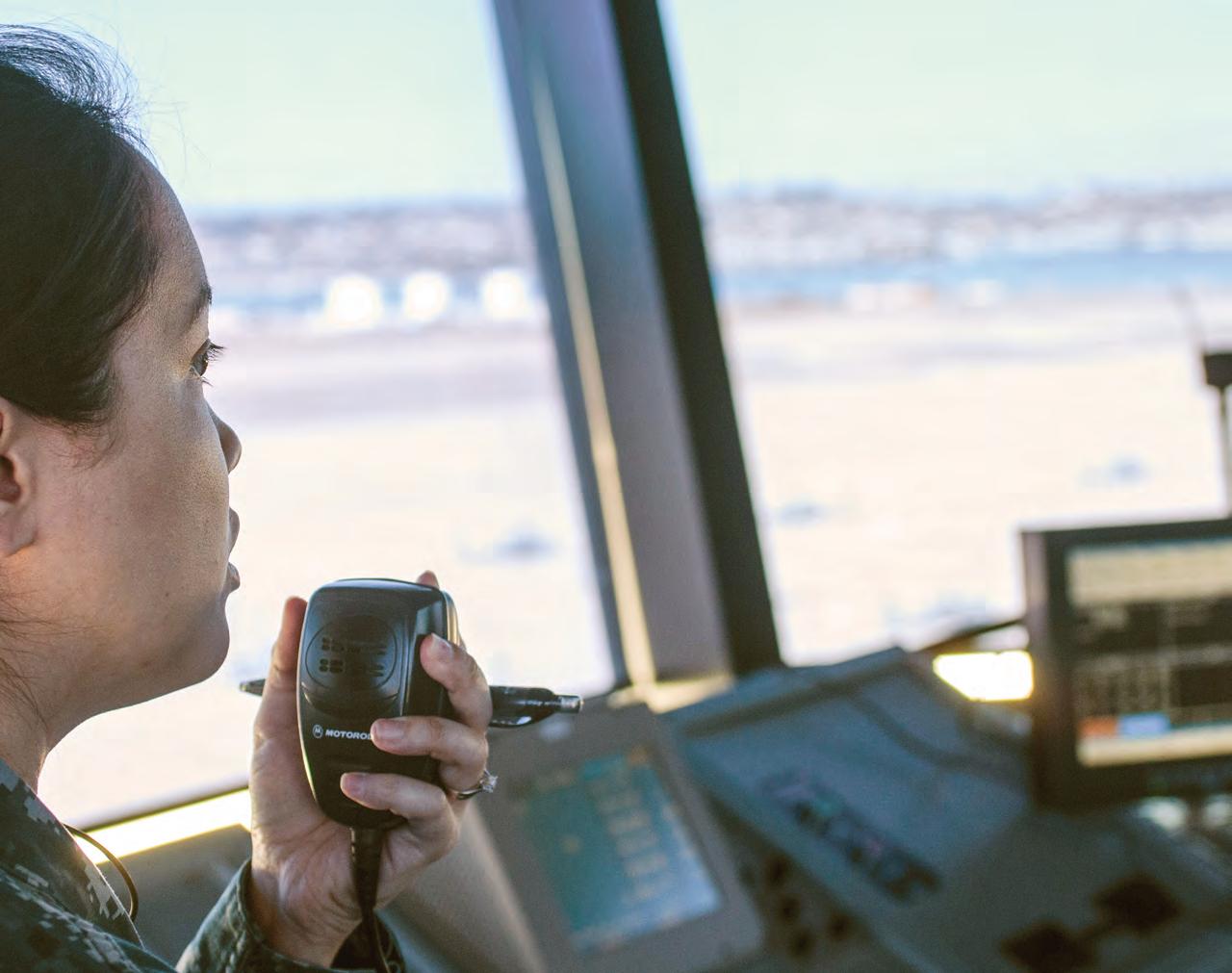
4 minute read
Fire of Unknown Origin Leads to 3-engine Landing
BY LT RYAN MCFEELY
ow-altitude, antisubmarine warfare (ASW) missions are the most rewarding and exciting for P-3 Orion aircrews. The missions also present the most challenging and critical regime of flight when dealing with emergencies and malfunctions. Proximity to water (as close as 200 feet) and intricate crew interactions throughout the entire plane intensify a sudden emergency or malfunction.
As a community, we train for these situations. We tailor our regular training events and qualification syllabi so that we can handle complex scenarios during critical phases of flight. Pilots and flight engineers are introduced early on to complex scenarios that test their ability to prioritize aviating, navigating and communicating. This is done all the while conducting concise troubleshooting. In the back of the plane, NFOs and sensor operators are trained to quickly tackle emergencies that demand robust crew resource management.
The fire of unknown origin (FOUO) stands as the most challenging of these emergencies, especially when operating down low. The P-3 is a labyrinth of electronic racks with a multitude of buses and energized equipment. The key is quickly finding the source of the fire and securing power to it.
One day my crew, Combat Aircrew 3, was conducting an ASW training mission along the Gulf of Oman. We’d been on-station for 45 minutes, with the No. 1 engine secured for loiter. My TACCO (tactical coordinator, the senior NFO on board) saw fumes building in the tube and initiated the FOUO checklist. With two coalition helicopters working with us at a lower altitude, I initiated a climb to a safe altitude and instructed my copilot (2P) and flight engineer to don their smoke masks. Passing 2,000 feet and at an acceptable speed of 200 knots, I called for my flight engineer to restart the No. 1 engine.
The FOUO wasn’t the only emergency we were going to be faced with. During the restart we observed an NTS INOP light, indicating that our negativetorque sensing system (which prevents the propeller from dangerously driving the engine) had failed in some capacity. In accordance with NATOPS, we secured the engine via the emergency-shutdown checklist. Smoke and fumes continued to build in the cabin, and our TACCO called for us to continue with the FOUO checklist. Our original FOUO was now combined with an emergency shutdown.
To make matters worse, the aging P-3 threw a curve ball into the scenario. After we had secured the No. 1 engine and continued to handle the FOUO, the next step on the checklist was securing main AC bus A. As my flight engineer secured it via its bus-monitoring switch, we lost our monitorable essential AC (MEAC) and start essential AC (SEAC) buses. We subsequently lost our heading indications, shaft horsepower (SHP) gauges and TIT gauges among numerous other items on those buses. We had lost more buses than we expected – something else was amiss in the plane.
We were still in our climb, heading towards the Strait of Hormuz for an RTB. With the loss of navigation equipment, I put the plane into an orbit and leveled off at 10,500 feet. The aircrew in the cabin continued to investigate the source of the smoke and fumes. They isolated them to the overhead section near the stations for the TACCO and the navigator-communicator, junior NFO (NAVCOM).
P-3s are known for complex and complicated systems that demand thorough systems knowledge to diagnose

Editor’s Note: This photo is for illustrative purposes only and does not depict the actual day of actual events.
and troubleshoot inflight malfunctions and emergencies. Therefore, one must have extensive knowledge of the aircraft to understand what to do when something goes wrong. As I concentrated on the flying the aircraft and my copilot handled the checklists, the flight engineers quickly diagnosed the culprit behind the surprise losses of the buses. A stuck relay did not allow back-up power sources to energize once the primary source was secured. By resetting a few circuit breakers, they quickly got the relay to de-energize. We regained the lost buses and associated navigation equipment.
Our troubles weren’t over. We were still flying with one engine secured and an unresolved FOUO. With main AC bus A secured, the crew in the cabin saw the smoke dissipating, so my TACCO called for the smokeand-fume-elimination checklist followed by the restoring-electrical-power checklist. Shortly thereafter, smoke began building again, and we did the FOUO checklist once more. Smoke and fumes built and dissipated several times; our crew executed procedures. The source was finally identified as the HF1 cooling fan. All power was then secured to HF1, and we saw no more smoke or fumes for the duration of the flight.
The compound emergency scenario was under control. The aircraft was stable with the malfunctioning engine secured and the source of the cabin fire located and secured. We opted to re-energize the secured main AC bus A to regain the monitored systems with it secured. We returned to base and had no further trouble, executing an uneventful 3-engine landing.
In a span of just a few minutes, my crew had handled a complex scenario consisting of simultaneous and unrelated emergencies. We had executed the FOUO and subsequent checklists multiple times, and we had handled an emergency engine shutdown accompanied by unexpected bus losses all while initially operating at low altitude.
As the P-3 airframe continues to age, new and complex malfunctions appear, demanding effective CRM and training that ensures aircrews are as prepared as possible for complex emergency scenarios. This is why we train for worst case scenarios that make every pilot think, “This will never happen to me.”
LT MCFEELY FLIES WITH VP-1










